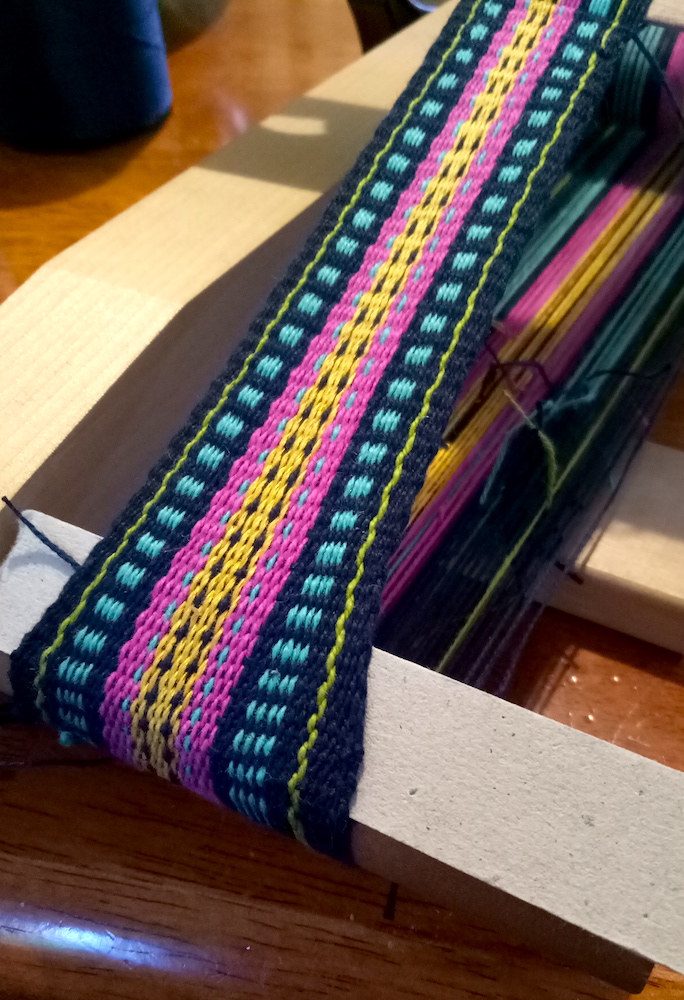
The Andean way of spinning and weaving fascinates me, as is the rich textile history and culture in the Andes. I have many nights left of spinning before I’m out of fleece. I still spin every night on my Pushkas before I go to sleep. The fleece I started with was around 2 kilos and there is lots left of it. Simple and complexĪ year ago I started spinning as close as I could to Andean spinning on Peruvian Pushkas. The weaver ties her- or himself into the loom between the near loom bar and the backstrap. In the Andes most backstrap weaving is done warp-faced. The technique can be used with tablets, a rigid heddle or with string heddles and is still practiced in many parts of the world. I’m weaving a circular warp and the dovetail stick keeps the beginning and the end of the warp together. The thin stick at the top with red silicone bands is a dovetail stick. The beater/sword/machete is used to beat the weft. The heddle rod holds the heddles that lift the lower threads in the shed. These keep the cross in place and helps the weaver find both sheds. The two bars attached together with silicone bands are the rolling bars. The near loom bar is attached to the backstrap around the weaver’s hips and the far loom bar around a tree or post. The building of a Backstrap Loom: On the far ends (which you can’t see) are the near and far loom bars. The weaver builds the loom for every new project. Backstrap weavingīackstrap weaving is an ancient technique where the warp is attached in one end to a weaver and in the other to a solid object like a tree or a post.

In this post I share my learning process, my thoughts and my woven projects in the online course in backstrap weaving that I’m taking. The simplicity of the tools together with the complex textiles you can make and the ubiquitous presence and history of textile making all warm my heart.

For a long time I have been fascinated by the rich textural culture of the Andes.


 0 kommentar(er)
0 kommentar(er)
